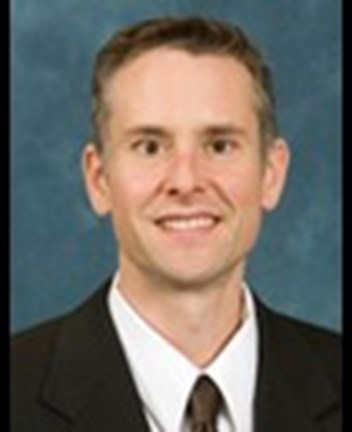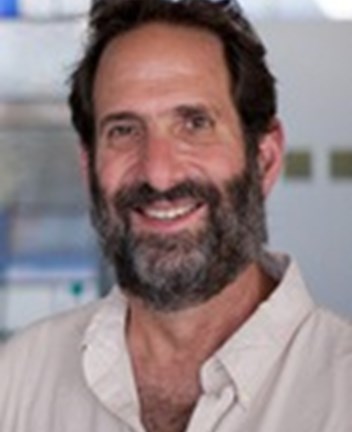The LRF doctoral student will conduct a collaborative project between research groups at the University of Michigan (UM) and the University of Southampton (UOS) to study nanostructuring of wide-bandgap (WBG) SiC, and application to electronic devices capable of operating under harsh environments (resistant to high-temperature, corrosion, mechanical stress, background radiation). A new approach for localized control of electrical charge transport in SiC is proposed based on non-thermal nanostructuring on ultrafast (femtosecond) time scales. Such materials modifications are anticipated to provide both breakthrough technologies for SiC electronics, and a new enabling technology for realizing resistive memory devices (RRAM). Localized structural transitions may be achieved via irradiation with an ultrafast laser. Femtosecond laser pulses are capable of producing a high-density electron-hole plasma, band-gap “collapse”, and non-thermal (or cold) melting. This phenomenon has been demonstrated in several semiconductor systems, including Si, GaAs, and ZnSe. Recent work at the University of Michigan has demonstrated the formation of both nanodots and periodic surface structures in GaAs and ZnSe using this approach. Similar preliminary studies on SiC have demonstrated an increase in material conductivity by 5 orders of magnitude by ultrafast laser irradiation in the presence of nitrogen. The conductivity increase is attributed to laser induced doping in SiC, without any thermal treatment. This is a remarkable feat considering that nitrogen dopant activation in SiC typically requires a thermal annealing treatment at 1600 degrees Celsius. This approach therefore appears to be highly suitable for achieving localized structural transitions and modulation of electronic properties, without the requirement for high thermal treatments of the surrounding bulk material/system. In this project, localized structural modifications of SiC via femtosecond laser irradiation will be studied at the nanoscale. The resulting structural, chemical, and electronic property modifications will be studied for pure single-crystal material and in the presence of varying dopant species. The physical mechanisms and ability to control structural modifications will be studied and applied to electronic devices. Intentional and localized structural and electronic modifications will be applied as a non-conventional means to improve existing SiC electronics technology, as well as to filament formation for emerging devices such as SiC RRAM.
Minhyung Ahn is a doctoral student in the Electrical Engineering and Computer Science Department at the University of Michigan. He was born in South Korea and finished his Bachelor's degree in Electrical Engineering at Seoul National University. He is currently studying ultrafast (femtosecond) laser interactions with wide bandgap silicon carbide as a means of modifying structural and electronic properties.

Dr Jamie Phillips is an Arthur F. Thurnau Professor of Electrical Engineering and Computer Science at the University of Michigan. His expertise is in the growth, characterization, and device applications of compound semiconductor and oxide-based materials for optoelectronics and electronics where he has published more than 100 peer-reviewed articles. His current research activities are in the areas of infrared detectors and sub-wavelength optics for imaging, and next-generation photovoltaics for solar energy conversion and energy harvesting in low-power wireless sensors.
Prof. Phillips is a member of ASEE, AVS, MRS, and a senior member of IEEE. He currently serves as an Associate Editor for the Journal of Electronic Materials, the Program Chair of the Electronic Materials Conference, and has served on numerous conference committees including as Program Chair of the 2014 International Workshop on ZnO and Related Materials. He received an NSF CAREER award, DARPA MTO Young Faculty Award, IEEE Paul Rappaport Award, EECS Outstanding Achievement Award, and University Undergraduate Teaching Award.

Current research focuses on understanding the relationships between atomic structure and materials properties at surfaces and interfaces in a wide variety of material systems. To this end, the evolution of epitaxial and textured growth is engineered to produce nanostructured films with specific functional properties for applications in electronic materials, optical materials and tribological materials. Recent work includes the use of femtosecond lasers to deposit films as well as to control the kinetics on growing surfaces by irradiation of the substrate. Ultrafast laser/material interaction is being studied in detail to understand the fundamental mechanisms which drive ablation and collateral damage. Our work focuses on the damage and material removal processes in metals and semiconductors. We use a variety of characterization techniques including pump-probe ultrafast microscopy, femtosecond Laser Induced Breakdown Spectroscopy (fsLIBS), dual pulse LIBS, optical and scanning electron microscopy, transmission electron microscopy, and a variety of in-situ probes. Recently we discovered a novel approach to nano and micro fluidic channel manufacturing using ultrafast lasers. We are pursuing the development of this technique. One major area of interest is the behavior of advanced electronic materials at metal/semiconductor interfaces. The goals of this program are directed at understanding the ultra high vacuum, molecular beam epitaxy (MBE) growth of thin, epitaxial films on silicon. Knowledge of the way in which growth conditions are related to the atomic structure and morphology of the epitaxial films is central to producing high quality, well-characterized, single crystal films. Once a film can be grown with atomic perfection, it becomes an easier task to relate macroscopic properties (electrical, optical, mechanical, magnetic, etc.) to the details of the structure. A large arsenal of experimental techniques are used for the characterization of these films both during and after growth. In-situ characterization includes Auger electron spectroscopy, low energy electron diffraction, reflection high energy electron diffraction, and photoelectron spectroscopies. Ex-situ characterization methods include transmission electron microscopy (conventional and atomic imaging), scanning tunneling microscopy, low angle x-ray diffraction, ion channeling spectroscopy, etc. Another area of interest is understanding the atomistic reasons for the amorphous to crystalline transformation in low temperature Si(100) homoepitaxy. The key to this phenomena has been eluding the community for some time. Roughness which develops at the growth surface is the prime candidate for study. Recent results conducted in this program have led to a model which explains this transformation in terms of the growth of facets from the rough film.